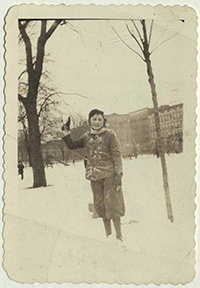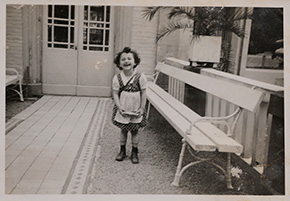"Frag nach, Just ask!" – The project
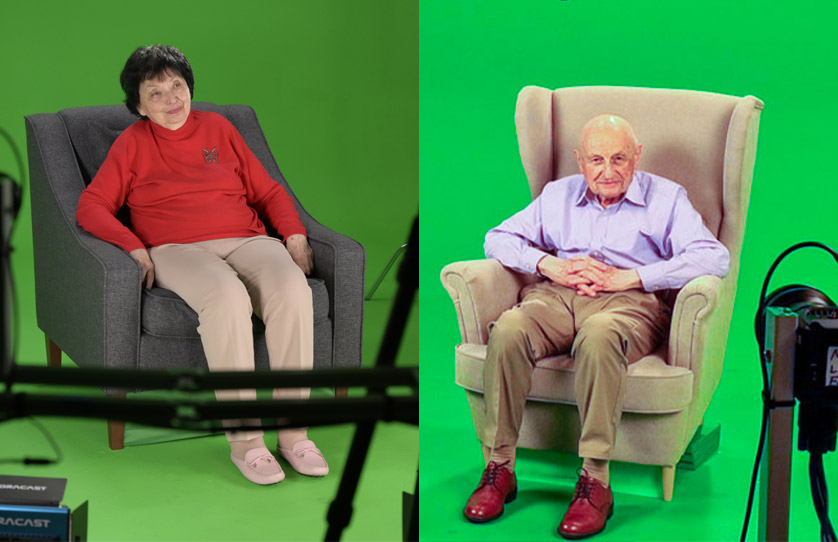
"Frag nach, Just ask!" Digital interactive interviews with Inge Auerbacher and Kurt S. Maier
Digital interactive interviews with contemporary witnesses
Digital interactive interviews with contemporary witnessesFor more than 70 years, survivors of the Shoah have been sharing their experiences with people from around the world, and in doing so providing important insights that shape our understanding of history. Yet what will happen when there are no more eyewitnesses who can tell us of the Shoah and of exile? How will this affect the way we remember? The German Exile Archive 1933–1945 at the German National Library has been working with the USC Shoah Foundation – The Institute for Visual History and Education to develop two interactive testimonies designed to preserve important interview material for posterity.
The project “Learning from the Past for the Present – Interactive interviews with Eyewitnesses of the Historical Exile”
The interactive interviews are part of the project “Learning from the Past for the Present – Interactive interviews with Eyewitnesses of the Historical Exile”. As part of the project, eyewitnesses Inge Auerbacher and Kurt S. Maier were asked a variety of questions which addressed topics such as their experiences of anti-Semitic persecution and exile after 1933.
The interactive eyewitness account is also a part of the USC Shoah Foundation’s Dimensions in TestimonySM programme and was developed to ensure that the stories of eyewitnesses of the Shoah reach future generations. Using specially recorded interviews, Dimensions in TestimonySM makes it possible to engage in a question-and-answer-based interaction with eyewitnesses. This interactivity is a central feature of the experience provided by Dimensions in TestimonySM, as the eyewitnesses’ statements are only activated when a question is posed. Dimensions in TestimonySM is the first project of its kind in the world.
The digital testimonies by Kurt S. Maier and Inge Auerbacher have featured in the exhibition "Frag nach! Just Ask! Digital interactive interviews with Inge Auerbacher and Kurt S. Maier" in the exhibition area of the German Exile Archive 1933–1945 in Frankfurt am Main since September 2023.
During the second phase, which will last until the end of 2024, the project will strenghten its connections with the existing permanent exhibition "Exile. Experience and Testimony”. The interaction between the two exhibitions and the accompanying educational programme allow visitors to find out more about National Socialism, exile, and topics such as racism, anti-Semitism and the loss of democratic values. They are encouraged to reflect, discuss and take a stance on these issues and enabled to understand them as a tangible, historic yet also contemporary threat.
Producing the digital interactive testimonies
In order to record the interviews, a team from the Exile Archive travelled to the present-day homes of Kurt S. Maier and Inge Auerbacher. The recordings were made there in specially equipped studios.
The interview for Kurt S. Maier's interactive testimony took place in Washington D.C. in July 2021, while the interview with Inge Auerbacher was recorded in a studio in New York in October 2022. The interviews were conducted by Dr. Sylvia Asmus, Head of the Exile Archive, who asked Kurt S. Maier and Inge Auerbacher more than 900 questions about their life stories, experiences during the Shoah and points of view. Each interview lasted five days.
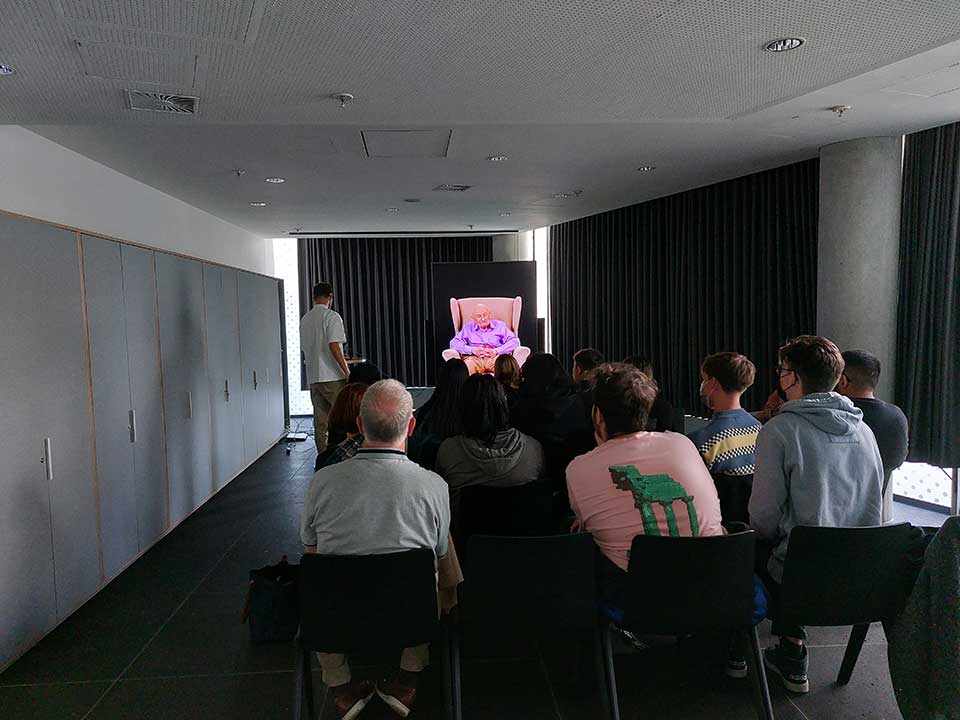 Photo: DNB, Josephine Ellermeyer
Photo: DNB, Josephine Ellermeyer
Between April and October 2022, Kurt S. Maier's interactive testimony underwent beta testing at the German National Library in Frankfurt am Main and Leipzig. This post-production phase was the first opportunity for groups to ask questions of the interactive eyewitness account, thus training the system which will be facilitating dialogue with the testimony in the future. More than 80 reference groups took part in the beta tests and helped improve the system by asking questions. The beta test phase for the interactive interview with Inge Auerbacher will continue until early in 2024.
The Exile Archive will also be taking the interactive testimonies on a tour through various regions of Germany.
Our aim is to make this innovative project better known, also outside Frankfurt am Main.
You can find out more in our blog.
Kurt Maier, contemporary witness
Kurt S. Maier was born in 1930 in Kippenheim. When he was 11, the family Maier was able to flee to the USA. Part of his life story is not only the experience of exile but also the forced deportation of the jewish community of Baden to the French camp Gurs in the Autumn of 1940. His partial premature literary estate is preserved in the German Exile Archive 1933-1945 at the German National Library.
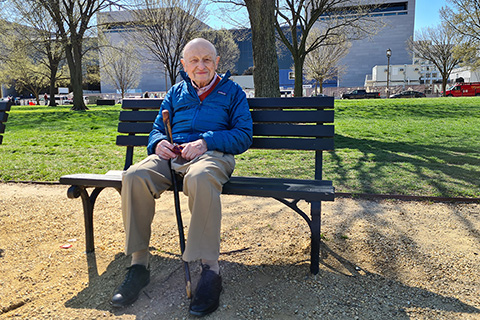 Photo: DNB, Theresia Biehl
Photo: DNB, Theresia Biehl
Ingrid Auerbach, contemporary witness
Inge Auerbacher was born on 31 December 1934 in Kippenheim (Baden). On 22 August 1942, Inge and her parents were deported to Theresienstadt, where they were imprisoned until the camp was liberated by the Red Army on 8 May 1945. After a brief stay at a camp in Stuttgart, the Auerbacher family initially returned to their home in Baden, but found that they no longer felt at home in German post-war society. The family emigrated to the USA in May 1946.
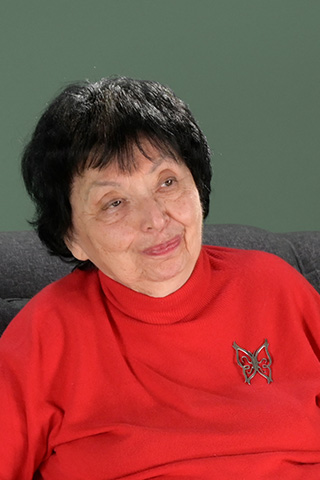 Photo: USC Shoah Foundation
Photo: USC Shoah Foundation
Cooperative partner

USC Shoah Foundation’s Dimensions in Testimony enables people to ask questions that prompt real-time responses from pre-recorded video interviews with Holocaust survivors and other witnesses to genocide. The pioneering project integrates advanced filming techniques, specialized display technologies and next generation natural language processing to create an interactive biography. Now and far into the future, museum-goers, students and others can have conversational interactions with these eyewitnesses to history to learn from those who were there.
Dimensions in Testimony was developed in association with Illinois Holocaust Museum and Education Center, with technology by USC Institute for Creative Technologies, and concept by Conscience Display. Funding for Dimensions in Testimony was provided in part by Pears Foundation, Louis. F. Smith, Melinda Goldrich and Andrea Cayton/Goldrich Family Foundation in honor of Jona Goldrich, Illinois Holocaust Museum and Education Center, and Genesis Philanthropy Group (R.A.). Other partners include CANDLES Holocaust Museum and Education Center and the German Exile Archive 1933-1945 of the German National Library.
Sponsored by:

Information and contact
exilarchiv@dnb.de or +49 69 1525 1987
Last changes:
04.04.2024


